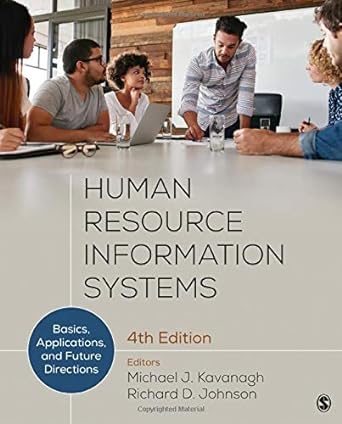A large MNE in the cookware industry was having difficulties maintaining its market share due to a
Question:
A large MNE in the cookware industry was having difficulties maintaining its market share due to a number of mergers among other competing firms in the industry. The MNE, with corporate headquarters in Canada, had production plants in 15 countries and a company presence in a total of 29 countries.
Although the firm had a number of competitors, its product was considered as having the highest quality—the Mercedes of cookware. The firm was family owned and founded in 1937. The most pressing problem was how the firm could stay competitive in the marketplace and stop decreases in sales.
Naturally, it was highly desirable to increase sales beyond annual averages, but, first, the firm had to change something to stabilize its place in the market.
Examining the problem, the CEO and the corporate board, consisting of all the corporate vice presidents as well as the CEOs of all the international locations, concluded that it was necessary to reduce operating costs by 5% to 6% to remain competitive. Thus, it was decided to determine if these cost savings could be achieved in operations, raw materials, finances, or HR.
The MNE managers examined the latest production technology in their industry. The firm discovered that its technology was fairly current and the few technological changes available would only help decrease costs by less than 1%. However, these modifications to their current technology were very expensive and did not appear to have a favorable return on investment (ROI).
Trying to obtain better financing was nearly impossible since the MNE had very favorable financing currently. The same was true for raw materials, since a decision to use cheaper materials would greatly reduce the quality of the company’s products.
As a result, the management of the MNE asked the IHRM department for some suggestions as to how personnel costs could be trimmed. However, there was one constraint established by tradition in the company. The MNE had never had a layoff of employees in its history, and the CEO refused to use this option to reduce personnel costs. One of the complicating factors was the different labor legislation as well as the very different cultures in the 29 countries in which the MNE did business.
Case Study Questions
1. How would you approach a solution to this problem for the MNE?
2. Assuming that reducing personnel costs is the best, and probably only, way to reduce overall corporate costs, what specific programs would you suggest to reduce costs? Why?
3. How would an HRIS for the MNE aid in finding HR programs to help solve this problem? What would be the most important data to access in the HRIS for the units and divisions of the MNE to determine feasible HR programs?
4. Are the problems of reducing personnel costs for an MNE different from those for a domestic-only company? Explain.
Step by Step Answer:

Human Resource Information Systems Basics Applications And Future Directions
ISBN: 201153
4th Edition
Authors: Michael J. Kavanagh, Richard D. Johnson





